
Gonarezhou National Park is a national park located in southeastern Zimbabwe. It is situated in a relatively remote corner of Masvingo Province, south of Chimanimani along the Mozambique border. Owing to its vast size, rugged terrain and its location away from main tourist routes, large tracts of Gonarezhou remain pristine wilderness.
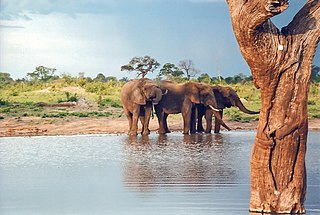
Hwange National Park is the largest natural reserve in Zimbabwe. It is around 14,600 sq km in area. It lies in the northwest of the country, just off the main road between Bulawayo and Victoria Falls. The nearest town is Dete. Histories of the region's pre-colonial days and its development as a game reserve and National Park are available online

Akagera National Park is a protected area in eastern Rwanda covering 1,122 km2 (433 sq mi) along the international border with Tanzania. It was founded in 1934 and includes savannah, montane and swamp habitats. The park is named for the Kagera River which flows along its eastern boundary feeding into Lake Ihema and several smaller lakes. The complex system of lakes and linking papyrus swamps makes up over a third of the park, which is the largest protected wetland in Eastern-Central Africa.

Moremi Game Reserve is a protected area in Botswana. It lies on the eastern side of the Okavango Delta and was named after Chief Moremi of the BaTawana tribe. Moremi was designated as a game reserve, rather than a national park, when it was created. This designation meant that the BaSarwa or Bushmen that lived there were allowed to stay in the reserve.

The Eastern miombo woodlands (AT0706) are an ecoregion of grassland and woodland in northern Mozambique, southern Tanzania, and southeastern Malawi.

Niabi Zoo is a public Zoological Park in Coal Valley, Illinois, serving the Quad Cities Area. This 40 acre zoo is nestled inside its 287 acre forest preserve. The exploration of this picturesque setting guides guests through the discovery of more than 600 animals representing nearly 200 animal species from around the world. Niabi Zoo is open for general admission April–October annually and offers robust education and outreach programs year round.

The International Rhino Foundation (IRF) is a Texas-based charity focused on the conservation of the five species of rhinoceros which include the White Rhinoceros and Black Rhinoceros of Africa, and the Indian Rhinoceros, Javan Rhinoceros and Sumatran Rhinoceros of Asia.
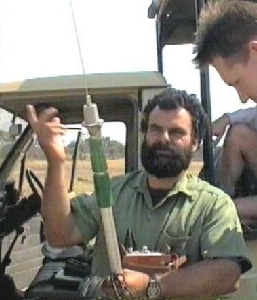
Greg Rasmussen is a 2023 Indianapolis Prize nominee and wildlife conservation biologist who has studied the critically endangered painted dog, previously known as the African wild dog, for over thirty years, one of the longest studies of the species ever conducted. Working in the Hwange National Park area in Zimbabwe, he is the founder and executive director of Painted Dog Research Trust (PDRT) whose mission is to both continue with research into the species and build for the future of conservation by meaningfully incorporating Zimbabwean students to develop local capacity and tomorrow’s conservationists. His work has proven successful with the national pack size doubling thanks to these dedicated efforts. He is also the founder and a former director of the Painted Dog Conservation (PDC) project in Zimbabwe which grew to be a model for conservation, incorporating antipoaching, community outreach, and child conservation education, developing long-term community conservation.
John McNutt, known as Tico McNutt, started the Wild Dog Research Project in 1989. His research in that field has been supported in part by the National Geographic Society. He received a doctorate in animal behavior from the University of California in 1995. At the time, he founded the Botswana Wild Dog Research Project as little was known about the biology of the African wild dog, though it was believed to be one of the most endangered canine species. Since then, Tico has followed many wild dog packs in Botswana’s Okavango Delta, eventually expanding his studies to include all major predators in the region.

The Snow Leopard Trust is the largest and oldest organization working solely to protect the endangered snow leopard and its habitat in 12 countries of Central Asia. The trust is a non-profit organization with its headquarters in Seattle, Washington. The present total population of snow leopards in the wild is estimated at between 3,920 and 6,390.
Bouba Njida National Park is a national park of Cameroon. A total of 23 antelope species occur in the park. The painted hunting dog, Lycaon pictus, had been observed in Bouba Njida National Park at the start of the 21st century. This population of the endangered canid is one of the few that remained in Cameroon as of the year 2000.
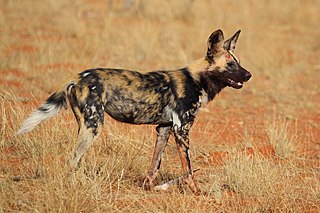
The African wild dog, also known as the painted dog or Cape hunting dog, is a wild canine native to sub-Saharan Africa. It is the largest wild canine in Africa, and the only extant member of the genus Lycaon, which is distinguished from Canis by dentition highly specialised for a hypercarnivorous diet and by a lack of dewclaws.
Tusk Trust is a British non-profit organisation set up in 1990 to advance wildlife conservation across Africa. The charity funds the protection of African elephant, African rhinoceros and African lion, along with many other threatened species across Africa. Tusk’s mission is to amplify the impact of progressive conservation initiatives across Africa.

The International Elephant Foundation (IEF) is a non-profit 501(c)(3) corporation. Formed by individuals and institutions, IEF is dedicated to the conservation of African and Asian elephants worldwide.
The Wildlife Conservation Network (WCN) is a United States-based 501(c)(3) non-profit organization that protects endangered wildlife by supporting conservationists in the field who promote coexistence between wildlife and people. WCN does this by providing its partners with capital, strategic capacity-building services, training, and operational support. WCN has been given a top rating amongst wildlife conservation charities, with a four star rating on Charity Navigator.
Erindi Private Game Reserve is a wildlife and ecological reserve in central Namibia, situated southeast of Omaruru on the regional border of Erongo and Otjozondjupa. Originally a set of three adjacent cattle farms, the 65,000 hectares estate was converted into a wildlife reserve starting in the 1990s.
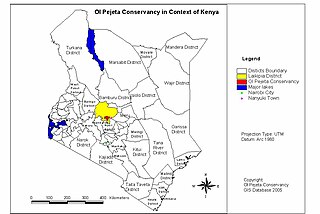
The Ol Pejeta Conservancy is a 360 km2 (140 sq mi) not-for-profit wildlife conservancy in Central Kenya's Laikipia County. It is situated on the equator west of Nanyuki, between the foothills of the Aberdares and Mount Kenya. The Ol Pejeta Conservancy works to conserve wildlife, provide a sanctuary for great apes, and generate income through wildlife tourism and complementary enterprises for re-investment in conservation and community development.
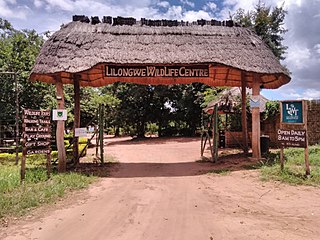
The Lilongwe Wildlife Centre is a wildlife sanctuary in Lilongwe, Malawi. It was founded in 2007 by the Lilongwe Wildlife Trust (LWT) and the Born Free Foundation. The Centre is a member of the Pan African Sanctuary Alliance and the Global Federation of Animal Sanctuaries.
The Big Life Foundation is a non-profit conservation organization focused on preserving the wildlife and habitats of the Amboseli-Tsavo-Kilimanjaro ecosystem of East Africa through community-based and collaborative strategies.
Nicholas Dyer is a wildlife photographer, author and conservationist, known for his work on painted wolves. He is a Trustee of the Painted Wolf Foundation, a Fellow of the Royal Geographical Society in London and a member of The Explorers Club in New York.














